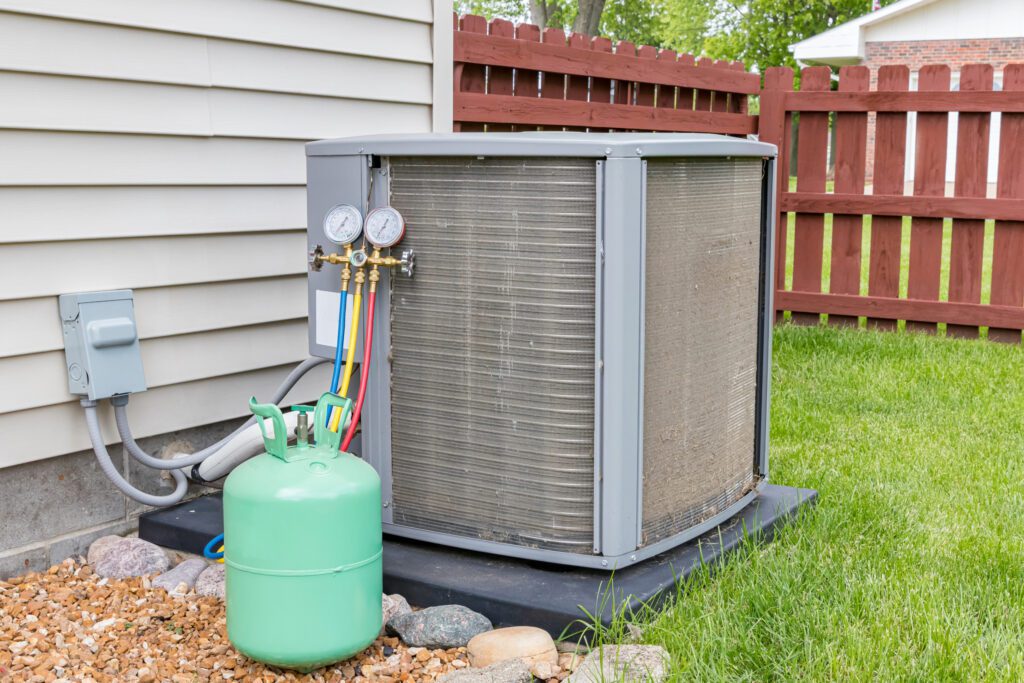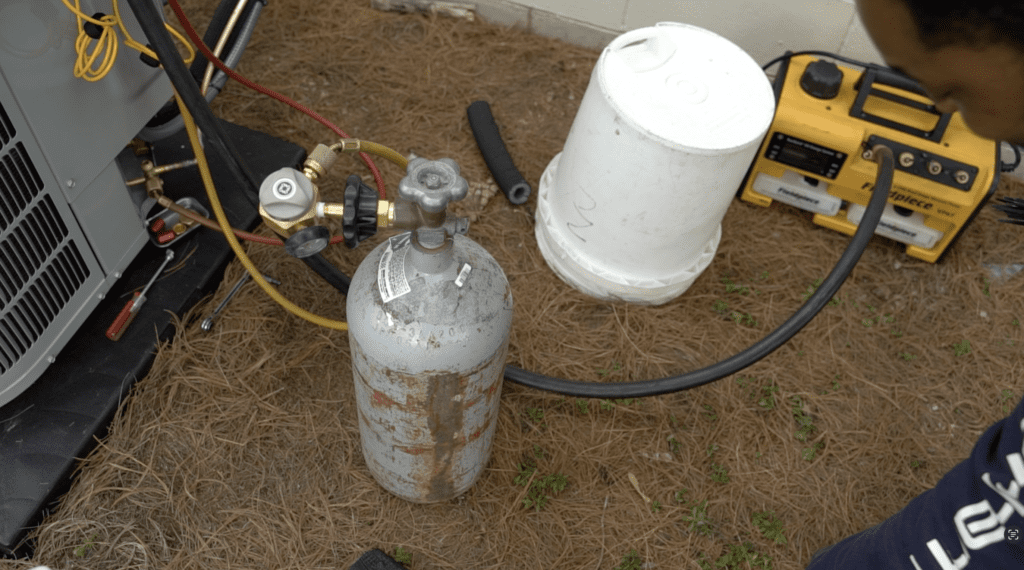Think of HVAC refrigerant as the lifeblood of your HVAC system—constantly circulating to keep your home at the perfect temperature. Just as blood delivers oxygen throughout your body, refrigerant absorbs and releases heat, making efficient cooling possible.
As your HVAC system runs, refrigerant extracts warmth from your home, transferring it outside to maintain a cool, comfortable environment. Without this essential component, your system wouldn’t function, emphasizing its critical role in energy efficiency and performance.
In the quest to maintain a pleasant indoor climate, HVAC systems are essential. These systems consist of various components and technologies that control temperature and enhance air quality. One vital element in this configuration is the HVAC refrigerant. This article will explore the role of HVAC refrigerants, their significance in air conditioning and heating systems, and why selecting the appropriate refrigerant is crucial.

Defining HVAC Refrigerant
HVAC refrigerant is a specialized fluid used within heating, ventilation, and air conditioning systems to enable heat exchange. It effectively absorbs heat from the indoor environment and expels it outside, playing an essential role in both cooling and heating processes. By undergoing phase changes—alternating between liquid and gas—the refrigerant efficiently transfers heat within the system’s closed loop.
The Role of HVAC Refrigerant in System Functionality
The main function of HVAC refrigerant is to facilitate heat transfer, thus enabling your system’s air conditioning and heating capabilities. Here’s a breakdown of how it works:
1. Evaporation and Heat Absorption: Initially, in a low-pressure gaseous state within the evaporator coils, the refrigerant absorbs heat from the indoor air blowing over these coils. As it absorbs heat, it evaporates into a gas. This action cools the air, which is then recirculated into the living space.
2. Compression: The now-gaseous refrigerant is compressed by the system, increasing its pressure and temperature before moving to the condenser coils.
3. Condensation and Heat Expulsion: In the condenser coils, the refrigerant releases absorbed heat to the outdoor environment and condenses back into a liquid. Then, the refrigerant returns to the evaporator coils, continuing the cycle.
This continuous cycle of evaporation, compression, and condensation is vital for regulating your indoor climate, making refrigerants essential for effective heating and cooling.
Importance of Choosing the Right HVAC Refrigerant
Selecting the correct refrigerant is crucial for several reasons:
– Energy Efficiency: The right choice can greatly improve the energy efficiency of your HVAC system. Some refrigerants are more efficient at transferring heat, which reduces energy consumption and lowers utility costs.
– Environmental Impact: Many traditional refrigerants have been phased out due to negative environmental effects, including ozone depletion and high global warming potential (GWP). Modern refrigerants are more environmentally friendly and meet strict environmental standards.
– System Compatibility: Not all refrigerants work with all HVAC systems. Using an incompatible type can lead to inefficiencies, damage, and expensive repairs, making it critical to understand which refrigerant best suits your system.
– Operational Safety: Refrigerants must be handled carefully, as some may be toxic or flammable. Technicians need to ensure that the chosen refrigerant meets safety standards to prevent accidents during operation and maintenance.
The good news is all our HVAC technicians are NATE-certified. Plus, they have extensive training and years of accumulated experience, ultimately allowing you to have peace of mind that we will take care of the job efficiently and effectively!
Popular Types of HVAC Refrigerants
Here is a brief rundown of commonly used refrigerants in modern HVAC systems:
– R-22: Once a prevalent choice, R-22 is being phased out due to its ozone-depleting characteristics. Existing systems that still use R-22 are either being replaced or retrofitted with more environmentally friendly substitutes.
– R-410A: This is a common choice for new residential air conditioning systems due to its efficiency and reduced environmental impact compared to older refrigerants like R-22.
– R-32: Increasingly popular, R-32 offers better efficiency and a lower global warming potential than R-410A, making it the preferred choice for contemporary HVAC systems.
The Shift Towards Eco-friendly HVAC Refrigerants
As environmental concerns become more prominent, the HVAC industry is advancing toward the adoption of eco-friendly refrigerants. Regulations like the Legislation such as the Montreal Protocol and the Kigali Amendment regulate high-GWP refrigerants, encouraging the development of alternatives with less environmental impact.
With that being said, keep in mind that innovative technologies are continuously facilitating the design of HVAC systems that employ next-generation, environmentally responsible refrigerants. Switching to these refrigerants supports global environmental objectives and prepares both homeowners and businesses for future regulatory demands.

To wrap it up, HVAC refrigerants are crucial for the efficient operation of heating and cooling systems. They manage the heat exchange process that ensures a comfortable indoor climate. Choosing the appropriate refrigerant is key to optimizing system efficiency, promoting sustainability, and complying with legal standards.
As mentioned above, refrigerant is the lifeblood of your HVAC system, and understanding its role is key to keeping your home comfortable and your system running smoothly. If you ever have concerns or want expert advice, don’t hesitate to reach out—we’re always here to help!
Call Circleville Heating & Cooling today at (740) 218-5323, or schedule an appointment online now by clicking here!
Our Professional Cooling Tip! In the meantime, check out our blog on how to stay cool while waiting for your technician to arrive.





